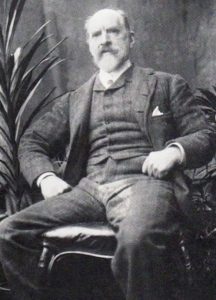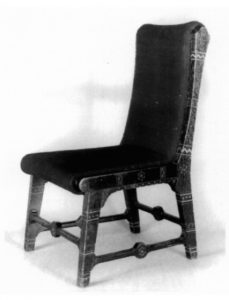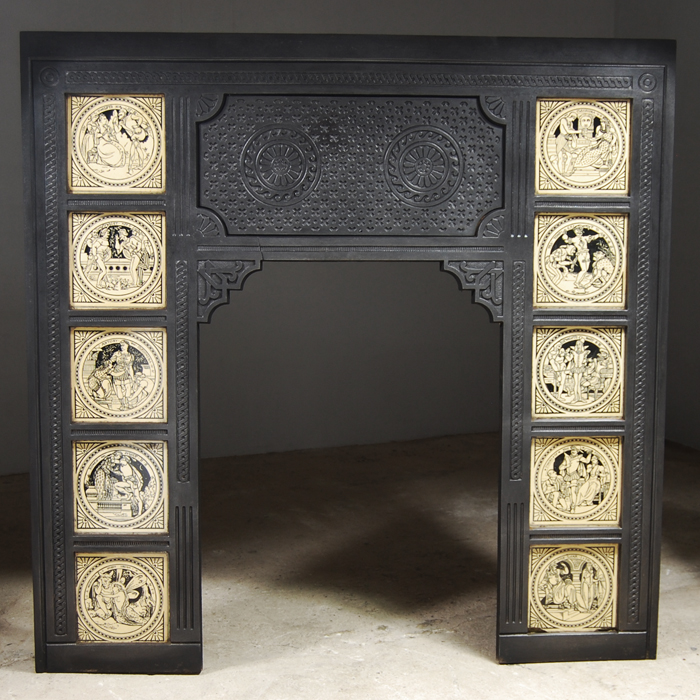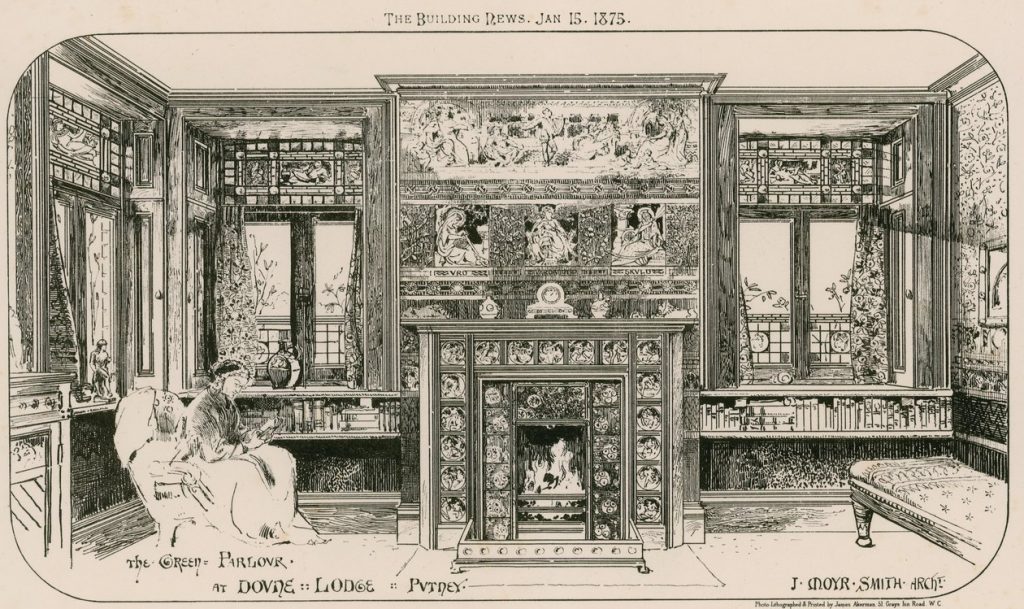Antony and Cleopatra Tiles by Minton
Within our collection is a quartet of wonderful ceramic tiles which not only reflect our family’s fascination with Egypt but our collective passion for ‘the Bard’. First produced by Mintons of Staffordshire in 1875 and transfer-printed in black and dark blue on a pale background, they are part of a series representing the plays of William Shakespeare and were designed by Scottish artist John Moyr Smith (1839-1912) (1).
Described as the ‘most prominent pupil’ of Dr. Christopher Dresser who himself had great interest in ancient Egyptian art (2), Moyr Smith had himself studied aspects of ancient Egyptian clothing and their furniture which he also reproduced, exemplifying the Victorians’ love of antiquarian research combined with an increasing desire for authentic stage and costume design.
Fortunate enough to have both of his Cleopatra designs within our own collection (3), each tile is set within a roundel inscribed ‘ANTONY AND CLEOPATRA’ and the acts and scenes on which they are based.

Two of our tiles feature the celebrated couple in the intimate moments of Act IV, scene 4, when Cleopatra has stepped out of her role as monarch in order to help the servant Eros prepare Antony for battle. As she kneels on a stool to buckle on Antony’s armour in an almost supplicant pose, gazing up at him, his hand rests on her shoulder in a touching gesture. Her vulture crown with uraeus tops her somewhat imaginative Rapunzel-like tresses as she bends forward, in contrast to Antony’s masculine stance emphasised by his elaborate Roman cuirass. Yet there are also meticulous details of interior design here too, from the Ptolemaic stone column at the back left of the scene to the triple 𓈖 hieroglyph symbols just visible on the royal footstool, mirroring Moyr Smith’s own ‘Egyptianizing’ furniture designs (1).

With the same level of detail to be found in our third and fourth tiles entitled ‘ANTONY AND CLEOPATRA V.II’, the column in the centre background this time features the face of goddess Isis-Hathor, who seems to be watching over Cleopatra, seated on her couch on a dais bearing the artist’s initials ‘MS’. Her vulture crown, broad collar and patterned robe have again been as carefully rendered as the pleated linen kilt of the ‘rural fellow’ whose basket housed the cobra-like snake he presents to her following Antony’s death. For this is the culmination of the play in Act V, scene 2, in which Cleopatra takes her own life and ultimately brings an end to more than three thousand years of pharaonic rule.
As a major event, both in Egypt’s history and English literature, the placement of these scenes on ceramic tiles brought them into a wide range of domestic interiors during the later C.19th, when they were often framed up as sets to hang on the wall as art work (4). Some were even inlaid into sideboards and chairs, but mostly set around the fireplace (5), where their hearthside location made them a real focal point bringing Egypt’s most famous female pharaoh right into the heart of Victoria’s Britain.


Dimensions: 15cm x 15cm
SKU: EM155, EM185, EM490, EM535
References:
- Stapleton, A. 1996, John Moyr Smith 1839-1912, Journal of the Decorative Arts Society (20), p.18–28 http://www.jstor.org/stable/41809237
- Conner, P. ed. 1983, The Inspiration of Egypt, Brighton, p.114, with Dresser’s work in Stevens Curl, J. 1982, The Egyptian Revival, London, p.184-185
- V&A have this design: https://collections.vam.ac.uk/item/O1243771/antony-and-cleopatra-iviv-tile-smith-john-moyr/ while the BM have this design: https://www.britishmuseum.org/collection/object/H_2000-1102-1 also in Walker, S. & Higgs, P. (eds), 2001, Cleopatra of Egypt: from History to Myth, no. 389
- Frame of 5 tiles featuring both Cleopatra designs alongside further scenes from other Shakespeare plays part of the Shakespeare Birthplace Trust collection at: https://collections.shakespeare.org.uk/search/museum/strst-sbt-2023-3-3/view_as/list/page/388; also aforementioned V&A Cleopatra tile mounted with 4 other Shakespeare play scenes at: https://collections.vam.ac.uk/item/O1243771/antony-and-cleopatra-iviv-tile-smith-john-moyr/
- See Moyr Smith’s sketch in ‘The Building News’ (15.1.1875) shown here, with both Cleopatra designs featured in the insert of an Aesthetic Movement tiled cast-iron fireplace in the manner of Thomas Jeckyll, shown here and at: https://www.lassco.co.uk/product/an-aesthetic-movement-tiled-cast-iron-fireplace-insert/?print-products=print

"Antony and Cleopatra" Tile by Minton

"Antony and Cleopatra" Tile by Minton

"Antony and Cleopatra" Tile by Minton




